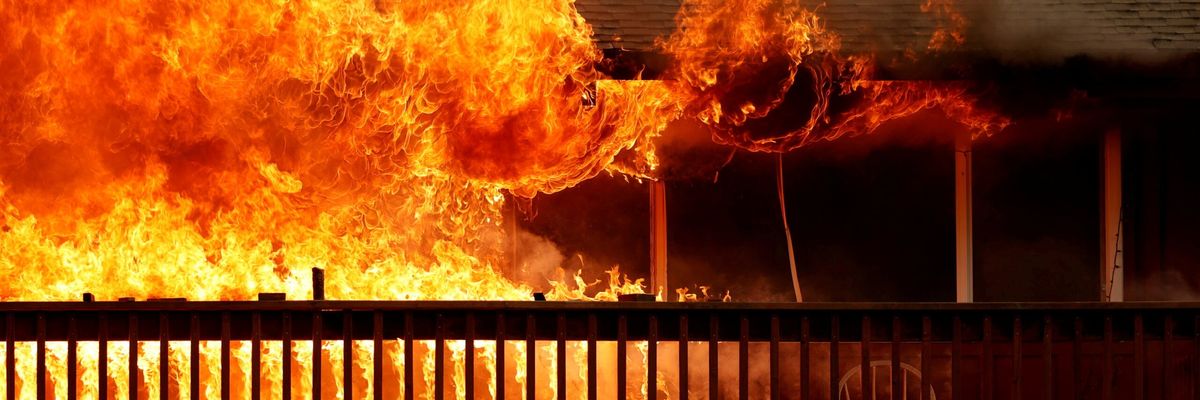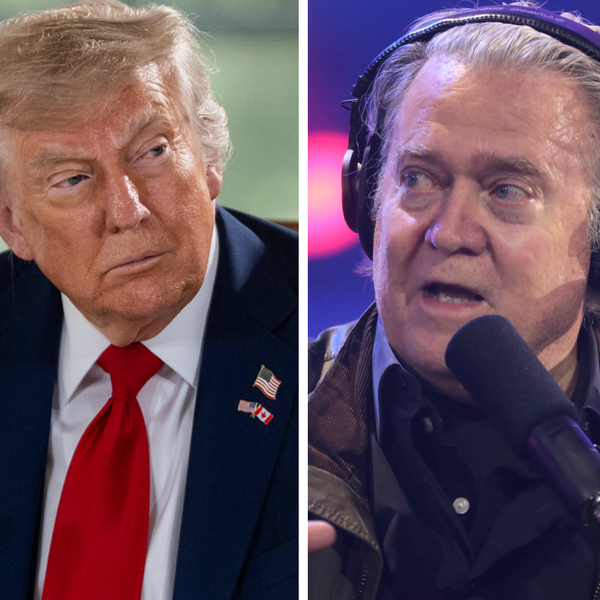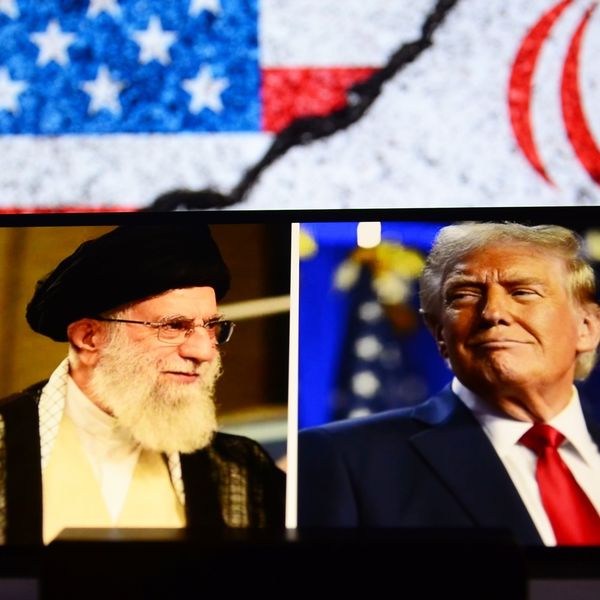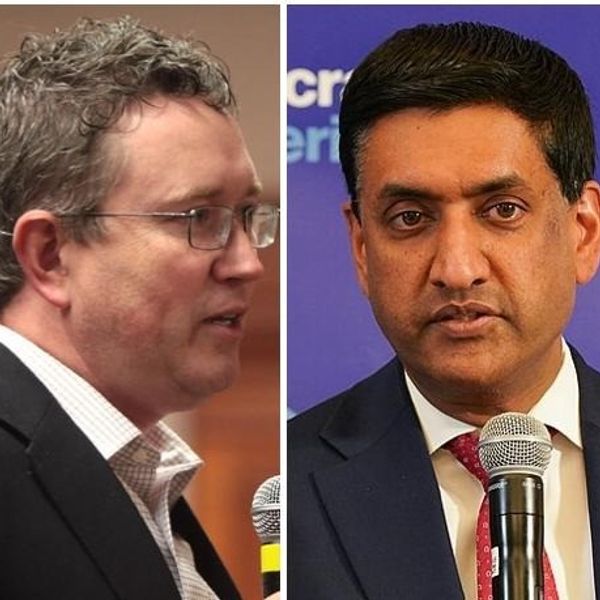In view of the latest report by the Intergovernmental Panel on Climate Change (IPCC), there can no longer be any rational, evidence-based doubt that climate change is by far the biggest danger facing the United States.
And as we can already see from the news of heatwaves and wildfires on the West Coast, its direct effect on American society has already begun. As the IPCC warns, because of the carbon gases already pumped into the atmosphere, these effects will get worse whatever we do now.
However, damage does not have to mean catastrophe — and catastrophe is what faces the world in general and the United States in particular if we fail to act. In response to the latest evidence, the Biden administration needs to declare climate change a priority in terms of national security, and to adapt its global strategy accordingly.
Climate change deniers have dismissed previous IPCC reports as alarmist. This is the exact opposite of the truth. In fact, because the IPCC is based on consensus between climate change experts around the world, its views may lean too far in the direction of prudence. In particular, the IPCC has been accused of downplaying the possibility of “tipping points” — like a colossal release of methane from the Arctic permafrost may lead to a catastrophic rise in temperatures within a time frame far too short for human societies to adapt.
But according to its new report, after a rise of only 1.2 degrees to date, heatwaves are already occurring almost twice as often. With a warming of 1.5 degrees, heatwaves will occur four times as often and be on average almost two degrees hotter. Given the damage already being done by heatwaves, it’s not hard to envisage what this will mean. Extreme rainfall is already 30 percent more likely to occur, and the IPCC predicts that with two degrees of warming, such events will almost double, as well as increasing in intensity.
The report now states that a rise in temperatures of 1.5 degrees between 2035 and 2050 is now a virtual certainty. Without “immediate, rapid and large-scale reductions” in carbon emissions a rise of over two degrees by the end of the century will also be a certainty. The result would be three categories of danger to the United States.
The first category is of direct physical damage to the United States, its economy and society. The greatest of these is likely to be intensified droughts, made worse by the exhaustion of aquifers in the southwestern states. The results will include severe damage to agriculture, and especially grain production, which will shift northwards to Canada. A combination of water shortages, rising temperatures and recurrent wildfires is likely to drive a massive and extremely costly shift of population back from the south west to the “rust belt” states which these people left in recent decades. Meanwhile, the coastlines of Florida, the Gulf Coast, and Texas will be affected by flooding and intensified hurricanes. The cost of insurance against these risks will drive premiums steeply up, even as property prices in these areas go steeply down.
These effects would however be dwarfed if — as the IPCC report warns is possible — the impact of climate change in the Arctic (where temperatures are rising much faster than across the rest of the planet) leads to one or other (or all) of a set of “tipping points,” resulting in reciprocal feedback loops and runaway climate change, whereby a rise of three degrees leads to a rise of four degrees, which automatically triggers a rise of five degrees, until sea levels rise by hundreds of meters, and human food production and civilization itself collapse.
Even a two-degree rise in temperatures may very well lead to the release of immense quantities of methane from the Arctic permafrost and seabed. Although methane does not survive in the atmosphere for nearly as long as carbon dioxide, while it does survive, its capacity to trap heat is almost 40 times that of CO2. Increased release of methane can already be observed in Siberia. Another danger is that the melting of Arctic sea ice will reduce the reflection of the sun's rays back into space and increase their absorption by the earth.
As Pentagon reports have warned, even much more limited rises in temperature however will have a disastrous effect on more vulnerable societies in heavily-populated parts of the world, leading to famines, civil wars, and the collapse of states. This applies above all to South Asia and western Africa, where temperatures are already close to the limits of human survivability for parts of the year, and where societies and agricultures are already facing severe and growing water shortages. The World Bank has warned that if climate change continues at present rates, by the middle of this century Indian economic growth will go into reverse, plunging hundreds of millions of people back into deep poverty.
West Africa is also in danger because of its hugely growing populations and dysfunctional state systems that are already suffering from growing Islamist extremism and a rise in ethnic tensions, including over access to water. The agriculture of Central America is also seriously menaced by climate change.
And as we know, the collapse of states elsewhere threatens the United States and its European allies, both through the rise of extremism and the increased flow of migrants. Such flows have already contributed greatly to the rise of anti-immigration movements and political tensions in Europe and the United States. If these reach a boiling point as a result of climate change, then Western liberal democracy could collapse. This, not Russian subversion, is the mortal threat facing our political systems.
The Biden administration should respond to the IPCC report by declaring clearly that climate change is the greatest security threat facing the United States, and that meeting it takes precedence over tensions with Russia and China. This should lead to a vastly intensified effort to reduce U.S. carbon emissions, but also to a new strategy of building resilience against the effects of climate change at home and in especially endangered regions of the world. U.S. international aid should be reconfigured along these lines, and the Army Corps of Engineers should be established as the most important and best-funded section of the armed forces.
Finally, since the cataclysmic possibilities of climate change are concentrated overwhelmingly in the Arctic, the administration should start urgent talks with Russia, Canada and China about concentrating global efforts on that region. Or the administration can go on shouting at China about the need for a “rules-based international order” with the rules set and broken at will by the United States. In that case, there is likely to be no order at all a century from now, in the United States or anywhere else.
Anatol Lieven’s book Climate Change and the Nation State (Oxford University Press) is appearing in an updated paperback edition on September 1st.














